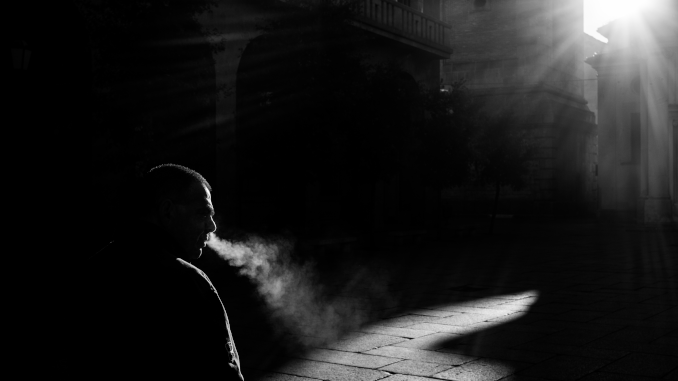
Today’s film is 1960’s “Cage of Evil,” starring Ronald Foster (Scott Harper), Patricia Blair (Holly Taylor), Harp McGuire (Murray Kearns), John Maxwell (Don Melrose), Preston Hanson (Tom Colton), Doug Henderson (Barney), Hugh Sanders (Martin Bender), Helen Kleeb (Mrs. Melton), Robert Shayne (Victor Delmar), Owen Bush (Sgt. Ray Dean), Ted Knight (Dan Ivers), and Howard McLeod (Kurt Romack). Directed by Edward L. Cahn; cinematography by Maury Gertsman. Produced by Edward Small and Robert E. Kent for Robert E, Kent Productions (credited as Zenith Productions). Distributed by United Artists. Music by Paul Sawtell and Bert Shefter. Screenplay by Orville H. Hampton, from a story by Orville H. Hampton and Alexander Richards.
The movie runs 70 minutes and feels more like an expanded episode of “Dragnet,” rather than a feature-length film, right down to the narrator giving us all the exposition. It’s not terrible, but it just reads “made for TV” instead of “made for the big screen.”
The story is a pretty common tale of a police detective (Scott Harper) who, while investigating the moll of a suspected diamond thief, decides a life of crime might not be so bad. He’s driven to this decision by the fact that after seven years on the job, he’s taken the lieutenant’s test at least three times; yet, in spite of doing well, continues to be passed over for promotion. He also has a tendency toward violence (at one point early in the investigation of the jewelry store heist, he roughs up one of the store’s employees, for no good reason), which ends up proving the good judgment of his superiors to pass him over.
His path becomes one of making one bad choice after another, until the ending reaches its inevitable conclusion.
Patricia Blair plays up her role as Holly the femme fatale with relish, so there’s that.
The production of this film is lazy, as if no one cared about putting out something of quality. As evidence of this, at one point Holly is led to a motel window. She’s wearing a medium-colored dress when she reaches the window and a black one when she climbs out. So yeah, no one cared enough to say, “Gee, maybe we should shoot the scene where she climbs out the window and runs over to the car again.” After all, the budget was tight, and everyone knew this was nothing more than a B picture.
The music is completely unsuited for the tone of the film, which is another of the indicators nobody cared about the quality of the production. As poor Scott lies dead on a staircase, the chirpy music swells to a crescendo, as if the guys on “Route 66” just climbed into their Corvette and headed off for their next adventure.
In the hands of a better team, this might’ve risen above its utilitarian roots, but as it is…
Oftentimes shadows or fog serve as a metaphor for the moral ambiguity of the story; there’s nothing ambiguous here. Even the recriminations and self-doubt of a man switching sides in the battle between good and evil aren’t in evidence. Moreover, once Scott becomes a killer, Holly doesn’t seem the least bit concerned about being in league with him; not for one moment does she ask herself if she can feel safe with such a man. She just blithely goes off with him to Mexico.
My score for this film is 2.5 out of 5 unfiltered cigarette puffs. If you have nothing better to do, it’s a decent way to kill about an hour.
Next week’s film is “El Vampiro Negro,” another restoration from the Film Noir Foundation and a remake of “M” from Argentina.
